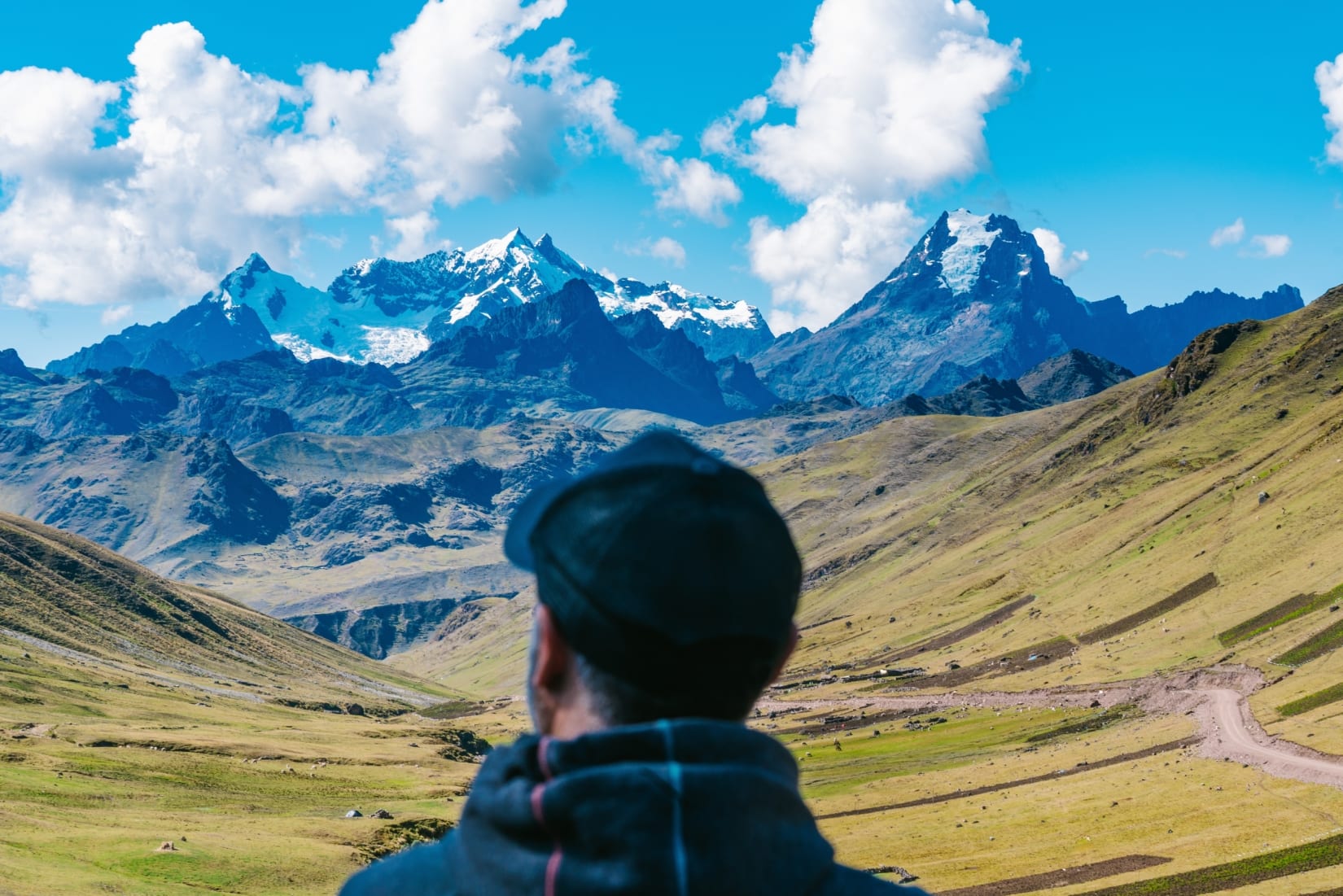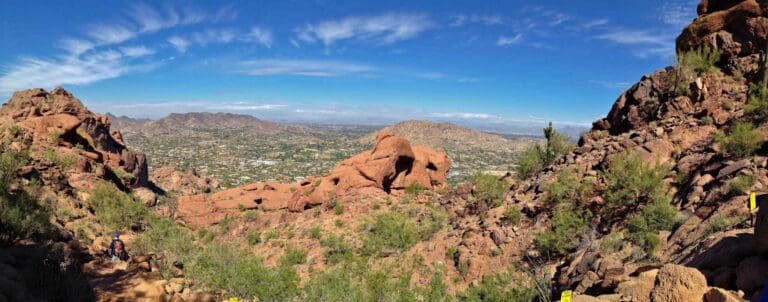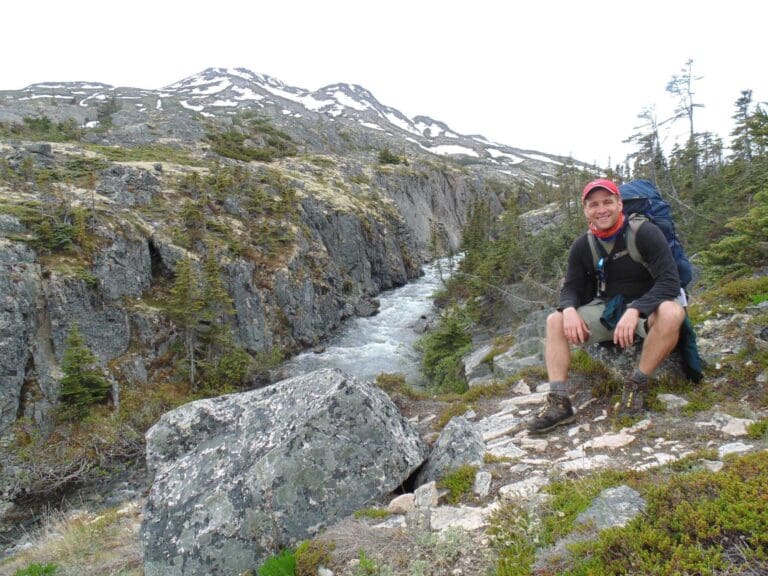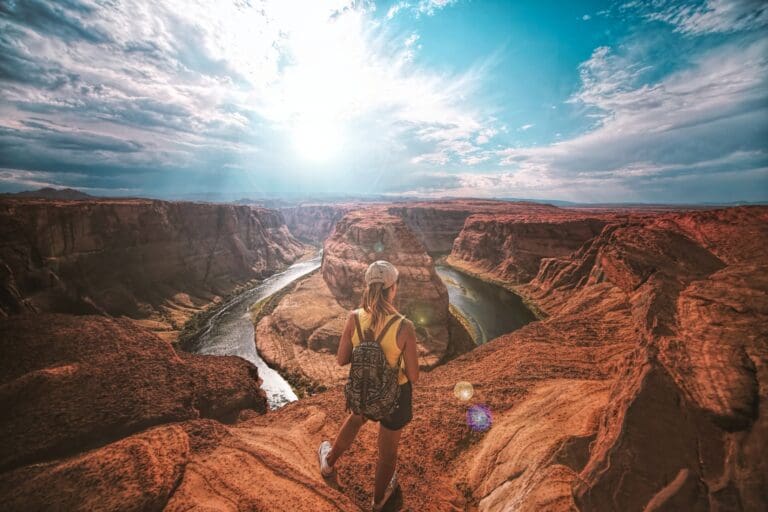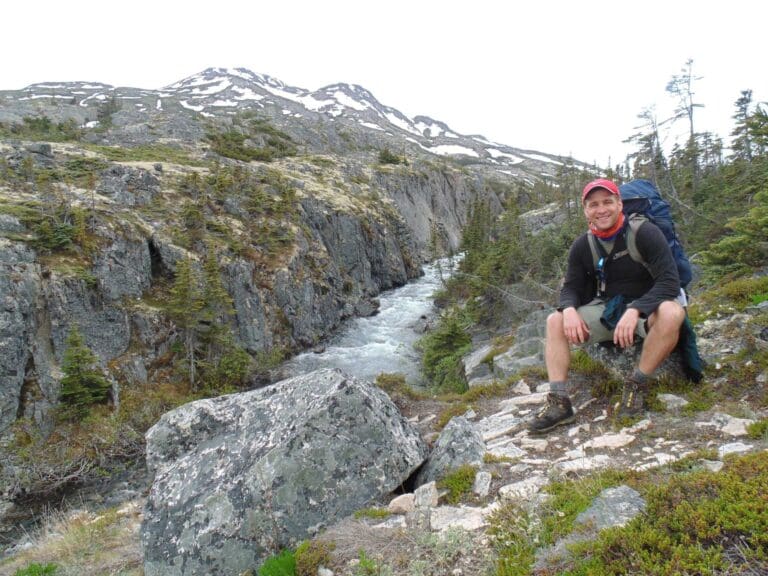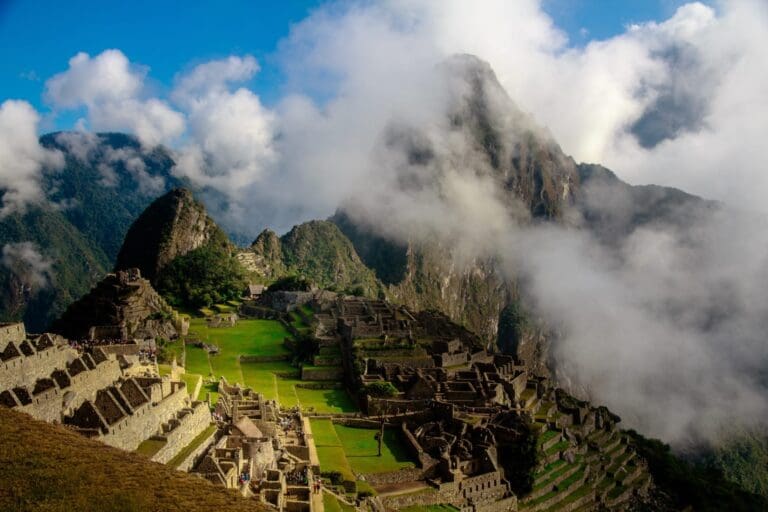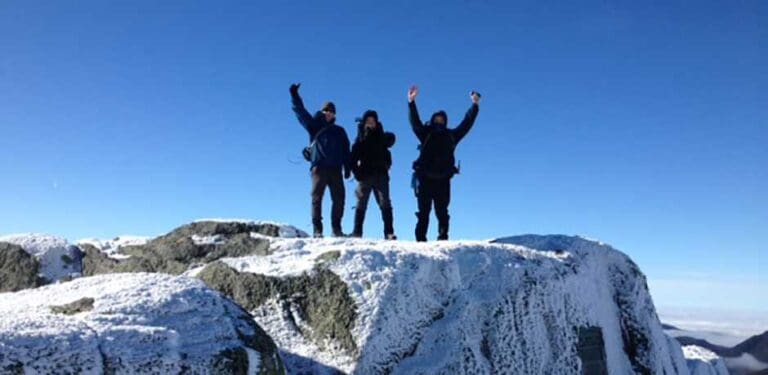Top 15 Places to Visit in Sacred Valley Peru in 2025
Peru’s Sacred Valley is the stuff of legend. It’s riddled with trekking routes that skirt rocky mountain ridges and paths once laid by pre-Columbian civilizations. There are bustling market towns where Incan weavers and farmers ply their trades, along with gushing rivers and strange salt pans carved into the Andes. And that’s not even mentioning the wealth of bucket-list UNESCO sites and archaeological digs that pepper the highlands, including the instantly recognizable terraces and temples of Sacred Valley ruins like Machu Picchu. Tempted? We thought so. Read on for the Top 15 Places to Visit in Sacred Valley Peru.
My experience in the Sacred Valley of the Incas
The Sacred Valley is a very special place. I wouldn’t be overstating things if I said that my first visit here changed the way I see the world. I remember being amazed by how layer upon layer of human history harmonizes with some of the most dramatic Andean scenery in South America. One moment you’re meeting hardy weaver peoples in Chinchero or Upis, the next you’re navigating orchid-filled cloud forests on your way over the passes of Salkantay.
The pièce de résistance of the Sacred Valley is often said to be Machu Picchu. But I think there are many places where this mystical cleft in the Cusco Andes hits a zenith. There are the half-crumbled temples that loom above Pisac. There’s the Sun Temple of Ollantaytambo, crowning a ridge atop adobe farmer cottages below. There are hot springs, and naturally, jaw-dropping vistas of glaciers rising from lush valley bottoms. Everyone should visit the Sacred Valley at least once in their lives. There’s plenty of travel inspiration here with the Top 15 Places to Visit in Sacred Valley Peru.
1. Cusco
Every odyssey through the Sacred Valley should begin and end at Cusco. This is the ancient capital of the Inca, a city steeped in myth and legend, perched on the cusp of the high Andes, and brimming with culture and history at every seam.
Cusco is the first port of call for trekkers heading off on the iconic Inca Trail and the Salkantay Trek to Machu Picchu. Thousands come for Sacred Valley route orientations, to acclimatize (Cusco itself sits at a whopping 11,200 feet (3,400 meters)) and to stock up on last-minute gear (there are plenty of outdoors outfitters in town).
But it’s also way more than just a jump-off point for the trails. Cusco enthrals with stunning conquistador-era architecture. Head to the bustling Plaza de Armas to be faced with one of the finest Baroque cathedrals in South America. Go to San Blas for cobbled alleys and sweeping views of the UNESCO center. Or feel the pulse of the city at the San Pedro Market and in the backpacker bars that come alive after dark. The city is the perfect place to start for all things to do in the Sacred Valley.
2. Maras Salt Mines
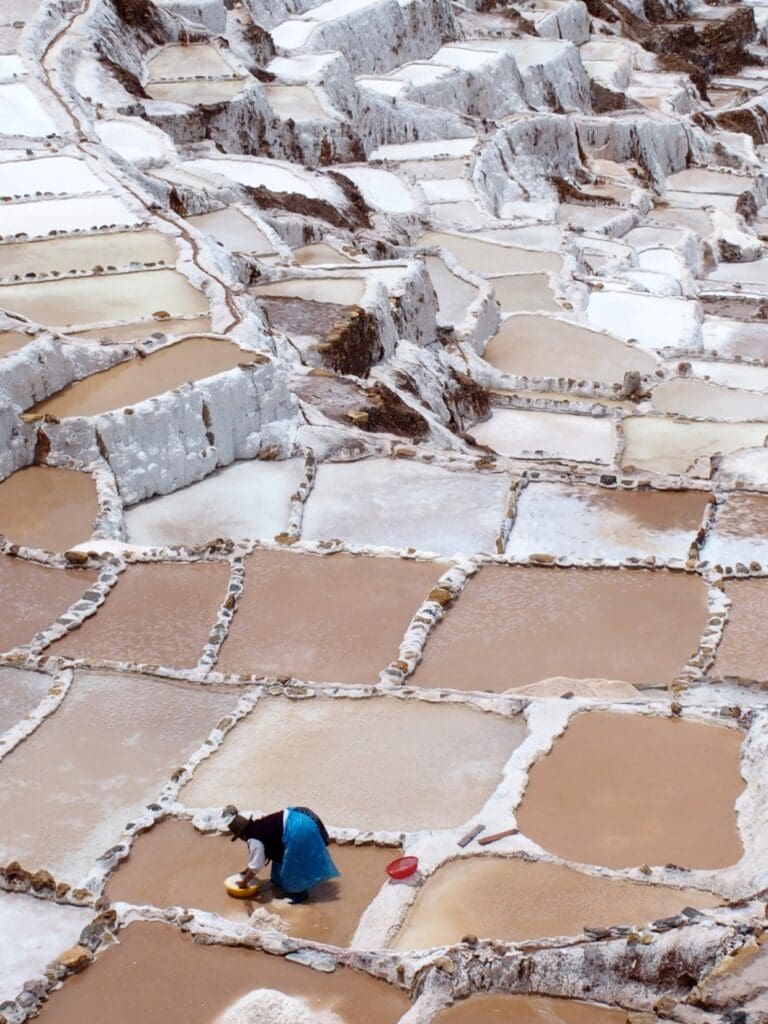
A mind-blowing 4,500 salt pans cascade down the sides of Qaqawiñay mountain at Maras. The spot constitutes yet another of the amazing UNESCO World Heritage Sites of the Sacred Valley. It offers a glimpse at the engineering ingenuity of the pre-Incan civilizations that inhabited this corner of the Andes, who constructed the pans to farm salt crystals from a brine-rich underground river some five centuries ago.
But the mines are no historic relic – they are still being used for salt production to this day! Harvests take place once a month, with the highest-quality salt (the famous Peruvian pink salt) coming during the dry season between May and October.
Today, visitors can take tours of the salty pans and buy all manner of salt-related paraphernalia from the local Maras community stores. There are a few small walking routes around the area that reveal spectacular vistas of the site, which unfold in a patchwork of marble-white amid a lush valley of rugged hills. No wonder it’s a photographer’s dream.
For more ideas about travel in Peru, check out our blog on The Best Places to Visit in Peru.
3. Urubamba
If you’re eager to escape the buzz of the city, then you can swap the lively plazas of Cusco and head to this small town straddling the Urubamba River about an hour’s drive to the north.
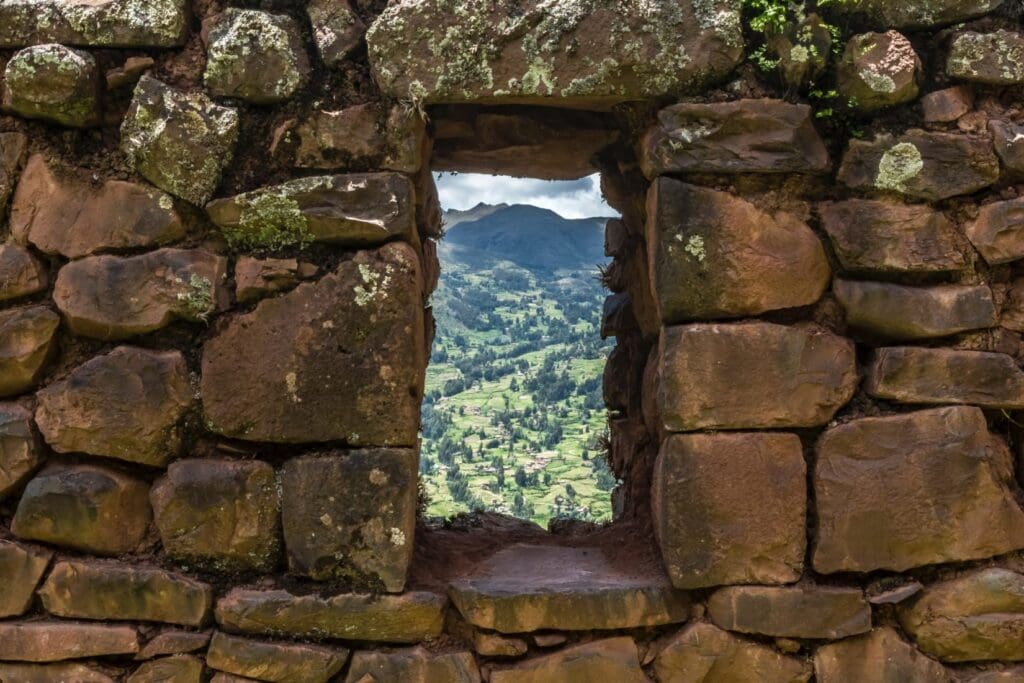
It’s a compact place of gnarled plane trees and avenues that purr with auto rickshaw taxis. The top draws are probably the arts market and the craft workshops. They burst with a kaleidoscope of local goodies, from alpaca-knit vests to organic Peruvian coffee beans to exotic fruits and vegetables plucked straight from the surrounding fields.
Talking of the surroundings – Urubamba has plenty on the doorstep. It’s possible to do tours of nearby Chichubamba, a community of agriculturalists and craftspeople that’ll serve up baked pork and intriguing handmade ceramics. What’s more, both the Maras Salt Mines and the fascinating Inca growing terraces of Moray are within striking distance.
4. Pisac
The charms run strong in little Pisac. Nestled into a fold of the Sacred Valley about an hour of hair-pinning roads out of Cusco, this pint-sized town is abuzz with life and energy. Most travelers explore the central plaza. There, crooked cobbles and ramshackle trader stalls explode into life when the farmers and the craftspeople descend for the Sunday bazaar. Don’t miss the Bazaar if you’re on the hunt for an alpaca-thread hat or a multi-colored Peruvian rug! The main streets filter away to the north and south, past little whitewashed churches and cantinas that sell steaming broths and stuffed chili peppers.
The famous Pisac Ruins overlook the Andes just above the town. You can climb to those on marked paths that begin at the end of Intihuatana Street. It’s not easy, ranging up to 11,000 feet (3,300 meters) above sea level. However, the reward is an exceptionally well-preserved Incan settlement, with pristine stone buildings and panoramic views south across the Sacred Valley.
5. Moray
Of all the Incan spots that surround Peru’s Sacred Valley, we’d say Moray is one of the most impressive. Instead of grand monolithic temples and astrological altars, this one’s all about cold, hard science. In fact, it’s sometimes referred to as the Agricultural Laboratory of the Incas, because the site was primarily used by pre-Columbian settlers to advance their understanding of agriculture and seed cultivation.
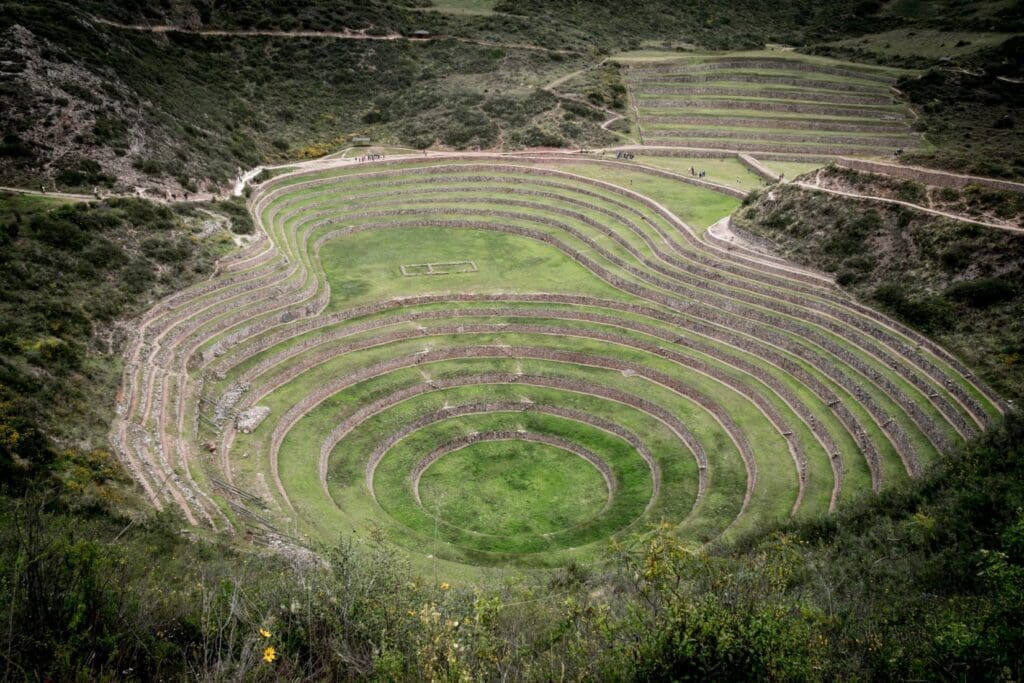
Moray is centered around a deep, amphitheater-like structure that sits more than 11,500 feet (3,500 meters) up in the Andes past the small town of Maras. It’s built in a series of stepped terraces, each of which is thought to have had unique microclimate conditions that let the Incas experiment with different plants and vegetables.
Moray’s terraces were more than just agricultural marvels—they highlight the Incas’ ingenuity. The series of stepped levels created distinct microclimates, allowing the Incas to experiment with different crops. Some theories suggest the site may have also had ceremonial significance, adding an intriguing layer to its agricultural history.
Moray still isn’t a part of the popular visitor circuit around the Sacred Valley and it’s not on the Inca Trail. Instead, tours typically leave from Cusco or Urubamba and are often coupled on a Sacred Valley itinerary with a trip to the nearby salt mines.
6. Huchuy Cusco
Huchuy Cusco is the onetime estate of the eighth Incan ruler, Emperor Viracocha. Its history reaches back more than a millennium, but it hit its zenith around the 1400s, when it rose to become a major citadel fortress and productive farming area.
Travelers entering this site get to explore a vast complex of terraced stone buildings, well-preserved residential quarters, and even a great hall known as a Kallanka, once the stomping ground of the Incan emperors. There are also some intriguing features that aren’t visible at other Sacred Valley ruins, like the elaborate irrigation system, while the views of Mount Veronica across the Cordillera Urubamba are simply jaw dropping.
7. Saqsayhuaman
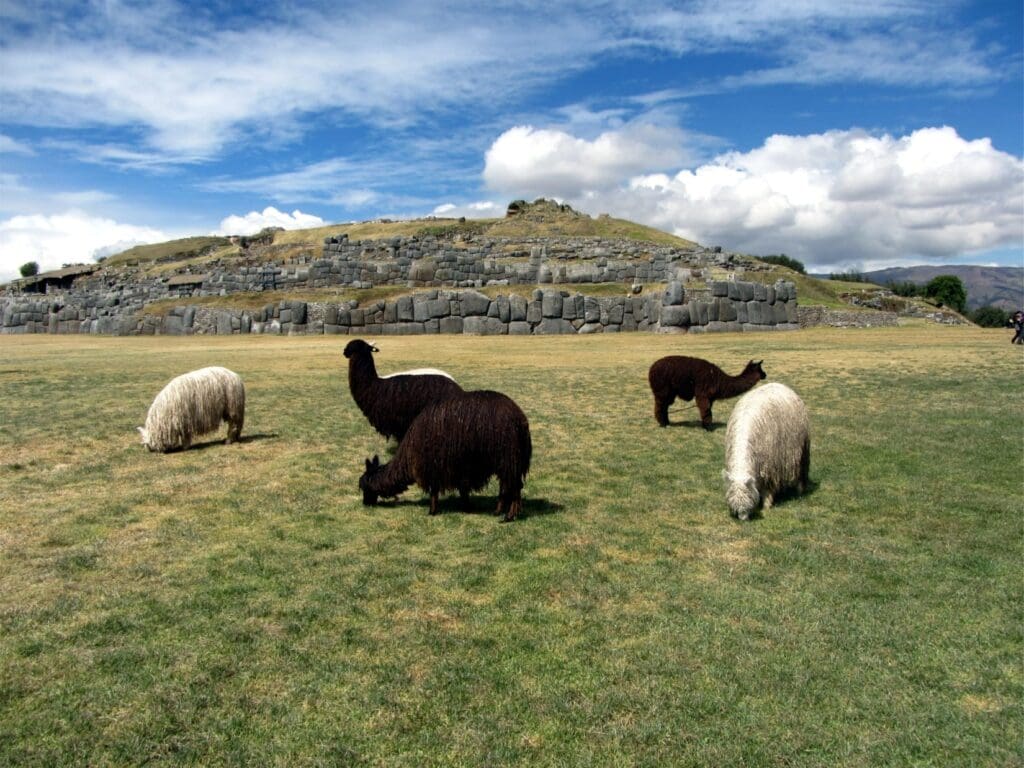
On a low hillside just above the bustling downtown core of Cusco itself, the Incan ruins of Saqsayhuaman open a window onto the Incan era of the city. They date back to the age of the revered emperor Pachacuti (the onetime ruler of Machu Picchu, no less) and are known for their colossal fortification walls. In fact, some say the stones used in the construction of the citadel are the largest single monoliths found in any ancient site in the Americas!
Saqsayhuaman is anchored on a huge central plaza. Around that, the imposing temple structures and parts of the bulwarks still stand strong, connected by grassy paths and old roadways. Modern-day Inca still use the site for their annual festivities. There are huge parades here for the winter solstice, known as Inti Raymi, and the Warachikuy rite of passage for Incan males also takes place each month.
8. Ollantaytambo
Ollantaytambo came under the sphere of the Incan Empire during the reign of powerful Emperor Pachacuti. It’s now a fantastic fusion of old and new. You can walk the center amid pizza joints and pisco sour bars, but also pass over large ancient plazas, see cottages that date back centuries, and seek out monolithic temples lurking on the hillsides above town.
Perhaps more than anything, Ollantaytambo is known as the prime starting point of the train to Machu Picchu. For those travelers looking to see this famed UNESCO site, you can come here from Cusco and tour the whole length of the Sacred Valley on an amazing site seeing adventure with your guide.
But there are also oodles of things to do in Sacred Valley Peru before you leave. Take the slopes of Pinkullyuna hill, where Incan-era storehouses still stand almost perfectly intact. Or go to the Ruins of Ollantaytambo, which hold fountains and strange astrological clocks.
9. Classic Inca Trail
It’s no secret that most people come to the Sacred Valley with the Classic Inca Trail somewhere near the top of their bucket list. This ancient pathway is one of the world’s top hikes. It weaves through large lengths of the region, linking up some of the most fascinating Incan locations with the fabled citadel in the clouds that is Machu Picchu.
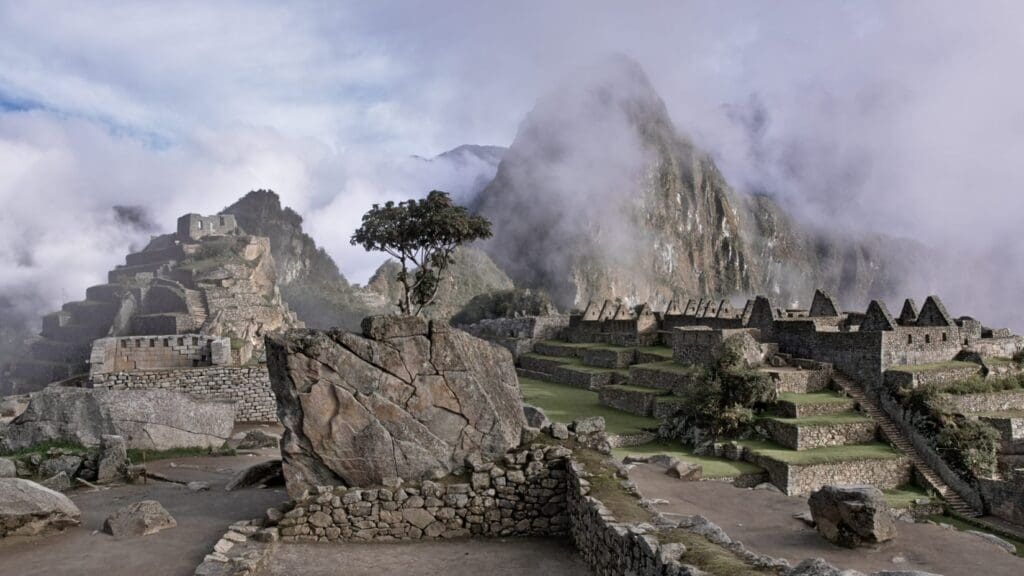
The Classic Inca Trail lasts four days and three nights. It begins in Ollantaytambo and crosses the Dead Woman’s Pass (the highest point at 13,828 feet, 4,215 meters), before delving into the archaeological sites of Wiñay Wayna and offering up glimpses of cloud-shrouded Salkantay mountain on day three.
The final push of the Incan Trail takes you through the most iconic parts of the Sacred Valley. You’ll zigzag up the side of a peak on tracks laid by the Inca themselves. Then, you pass under the Sun Gate to explore Machu Picchu.
10. Aguas Calientes
It’s strange, but Aguas Calientes isn’t actually that old at all. It came into being after the Sacred Valley railway line was completed back in the 1920s. However, it’s still a major destination for history buffs, largely because the most famous site in all of Sacred Valley Peru – Machu Picchu itself – soars just overhead.
Yep, no matter if you’re just completing the Classic Inca Trail, the mind-blowingly beautiful Salkantay Trek, or coming to see Machu Picchu on a day trip from Ollantaytambo, you’re sure to pass through little Aguas Calientes. That means thousands of visitors each year set foot in the pueblo, and there are backpacker hostels and bars that buzz with the excited chatter of people fresh off the trails.
Aguas Calientes does have one other claim to fame. The clue is in the name: Hot water. There are a few natural hot springs here that are a gift for weary walkers. Look for them up a narrow cleft in the Andes to the north-east of the center.
11. Chinchero
At more than 12,300 feet (3,750 meters) above sea level, Chinchero occupies a plinth under the gaze of the Cordillera Vilcabamba. The sleeping-giant peak of forever-snow-dusted Salkantay dominates the western horizon, as if to invite travelers ever deeper into the Sacred Valley. Linger a little, though, and you’ll be rewarded with a sleepy but charming town that’s famed for its centuries-old weaving heritage. There’s also a mix of Spanish churches from the colonial age and ancient pre-Colombian agricultural terraces built by the Incan emperors.
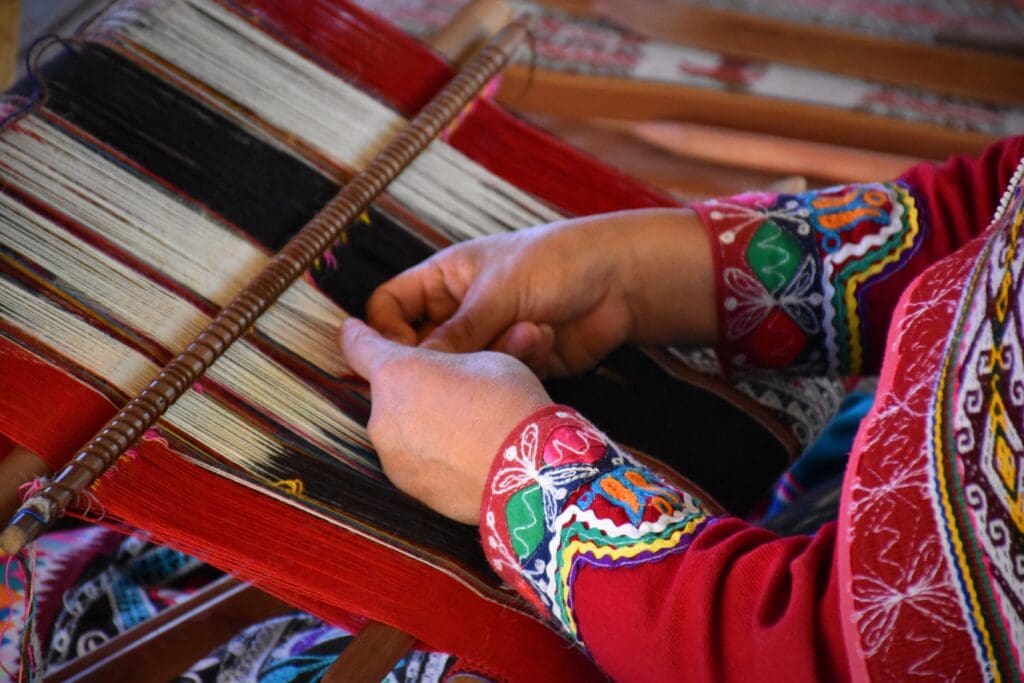
The aforementioned weaving culture runs deep here. The town is riddled with more workshops and craft sellers than you can shake a wooly alpaca sweater at. To learn more, you can dip into the Tupay Andean Textile Center, which offers weaving demonstrations and a shop. Chinchero is a little outside of the main trekking part of the Sacred Valley, but there are some relatively short hikes to do around Lake Puray and up to the 14,500-feet (4,420-meter) top of Hatun Luychu.
12. Salkantay Trail
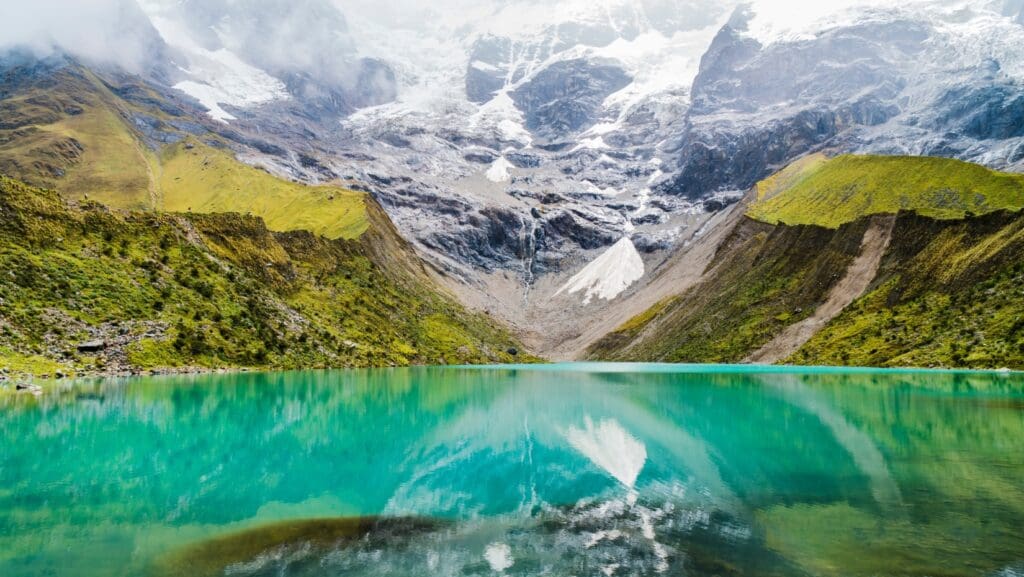
If you’re more interested in experiencing the raw and wild nature of the Cusco Andes than tracing the human history of the region, the Salkantay Trail is probably the route you’ll want to take. It typically takes five days and four nights in all and skips the much-trodden Incan paths that go to the citadel in the clouds. Instead, you’ll hike between monstrous massifs to see gleaming Humantay Lake and navigate verdant cloud forest jungles.
The Salkantay trail is considered a bit more of a physical challenge than other treks around Cusco. You’ll spend more and longer days hiking and have to conquer Salkantay Pass at 15,000 feet (4,572 meters) above sea level, some 1,200 feet (366 meters) higher than the highest point on the Inca Trail.
13. Lamay Community
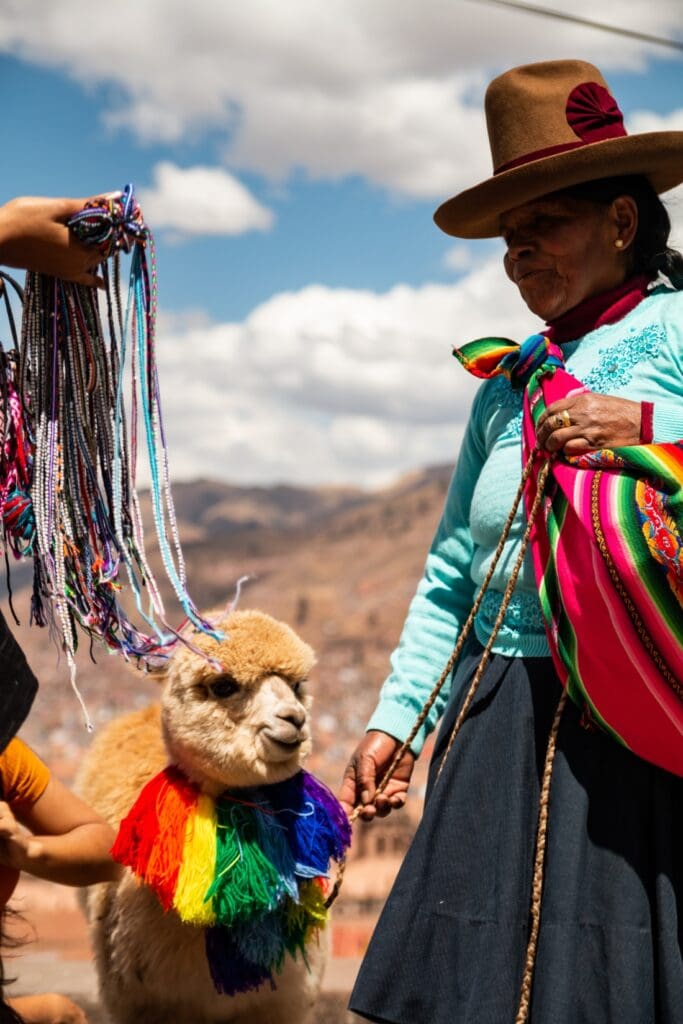
The Lamay Community consists of about 6,000 people spread between the village center and a handful of smaller hamlets and farming settlements in the surrounding mountains. It’s hemmed in by the peaks at the western end of the Sacred Valley, just over an hour’s transfer from Cusco. A visit is all about catching a glimpse of the traditional culture and lifestyle of the local people, who till the land for quinoa and corn, and craft colorful Peruvian garments from alpaca wool.
The Lamay Community has become a bit of a focal point for sustainable and ethical tourism within the Sacred Valley. Today, the community offers all sorts of experiences, from cooking lessons to farm days to guided hikes through the Urubamba ranges.
14. Amaru Community
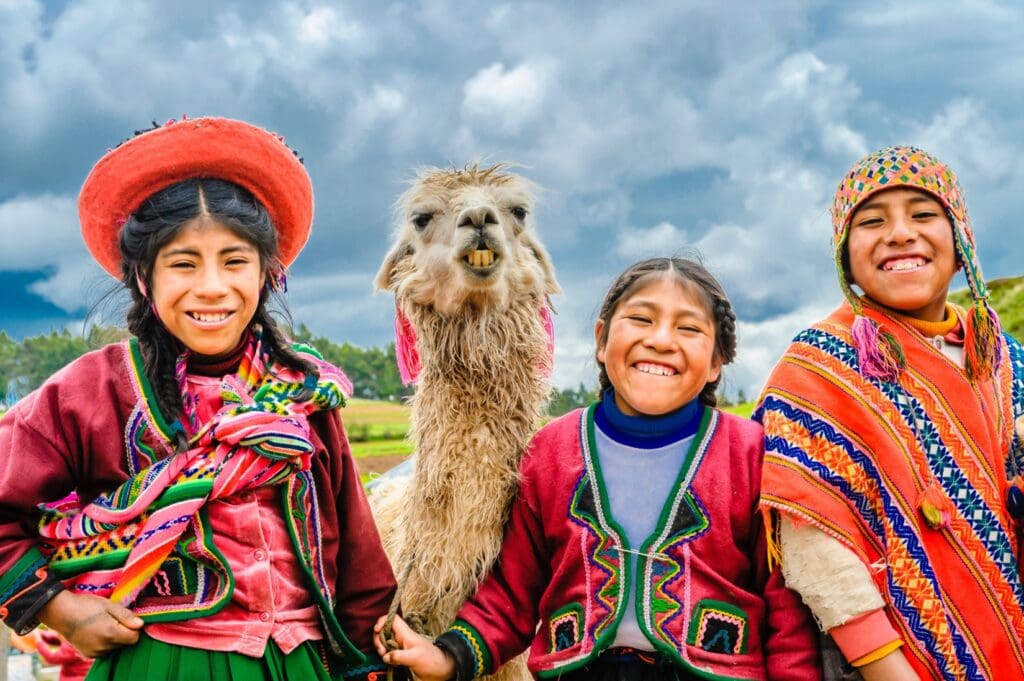
Up a wiggling, winding road that diverts away from Pisac on the northern side of the Sacred Valley, the intriguing Amaru Community spreads out some 11,600 feet (3,536 meters) above sea level. The breathless journey there is all about getting immersion in a traditional Andean craft and farming town that’s been largely untouched by modern tourism. Visitors are often welcomed with musical shows that have roots in the Inca period, along with floral displays intended as honorific gifts to Mother Earth.
The other reason to come here is the local Alpaca farm, where you’ll learn all about the age-old rearing of these hardy Andean grazers, and get a chance to fill the souvenir store! There’s also some remote hiking to be done in these parts, up to inky lakes on the slopes of Ichhunayuq mountain or the reservoirs of Laguna Azul Concha.
15. Machu Picchu
Machu Picchu is the jewel in the crown of the Sacred Valley. Draped over a long col above Aguas Calientes deep in the Andes, it’s arguably the most famous spot in all of South America. A mega 2,500 people visit the UNESCO site every day. They come to wonder at a great Incan estate that dates back 500 years, complete with strange temple complexes, throne rooms, residential areas, and monolithic gateways.
A trip to Machu Picchu begins with a trek or a bus out of Aguas Calientes to the beginning of the site. Others might arrive on the last leg of the Classic Inca Trail through the iconic Inti Punku (the Sun Gate). Once inside, you’ll behold arguably the greatest achievement of Peru’s pre-Columbian peoples. Highlights are the strange cave structures of Intimachay (thought to have been used for astrological observations), the mystical Temple of the Sun, and the festival enclosure of Inti Mach’ay.
I hope you enjoyed this guide on the Top 15 Places to Visit in Sacred Valley Peru. I know that there are even so many more extraordinary places to visit in this country. In fact, I wrote about Rainbow Mountain in Peru in an earlier blog post. I hope you get to visit Peru soon.
If you are interested to learn more about how we can take you to these extraordinary places, email us at info@explorerspassage.com or contact us here.
We look forward to seeing you in Peru!
Cheers,
Jeff and The Explorer’s Passage Team
Jeff Bonaldi
Founder & CEO
The Explorer’s Passage
About The Explorer’s Passage
The Explorer’s Passage (TEP) is the premier adventure travel company on the planet. No other operator provides more dynamic outdoor adventure travel experiences in the most raw and stunningly beautiful environments on earth. Whether you are looking to join one of the world’s great adventures, step back into history through the power of travel, or transform your life and the planet through a socially immersive experience, we have the perfect option for you.
About Jeff Bonaldi
Jeff Bonaldi is the Founder and CEO of The Explorer’s Passage, a premier adventure travel company. His mission is to provide travelers with the opportunity to transform their lives and the planet through the power of adventure.
Learn more about Jeff’s story and his company HERE.
Share this amazing location!

